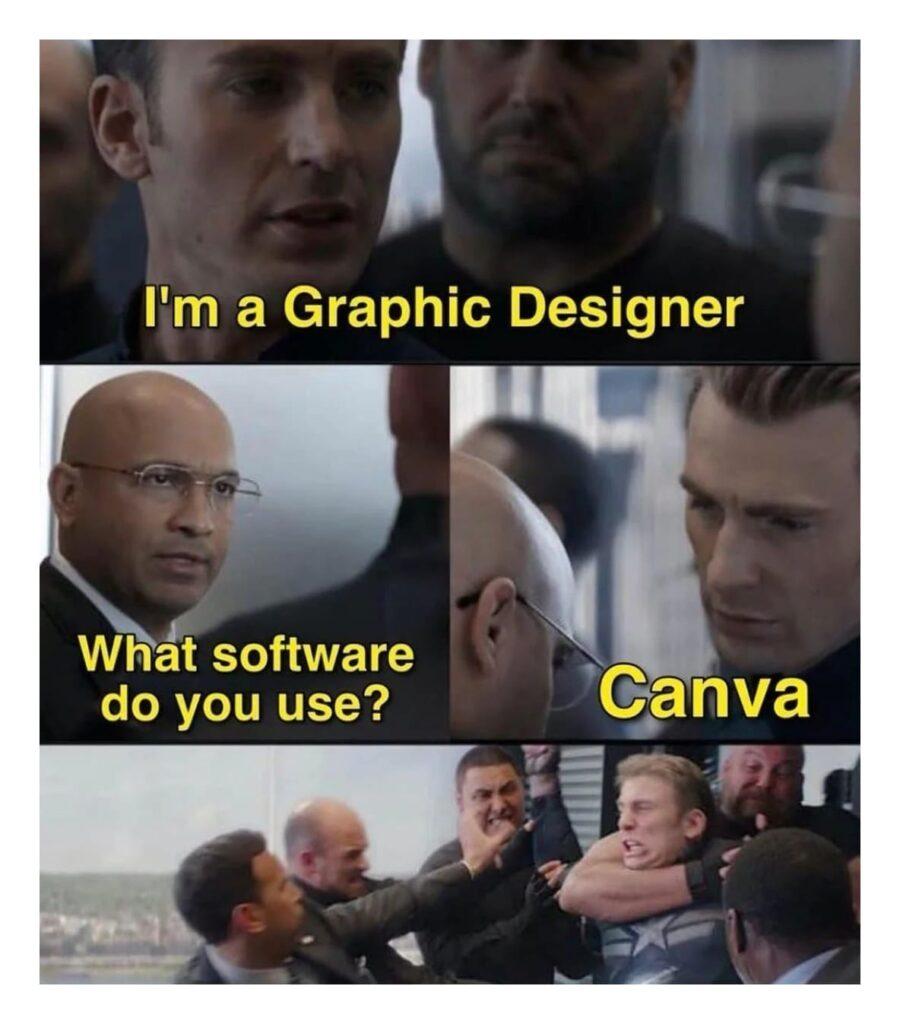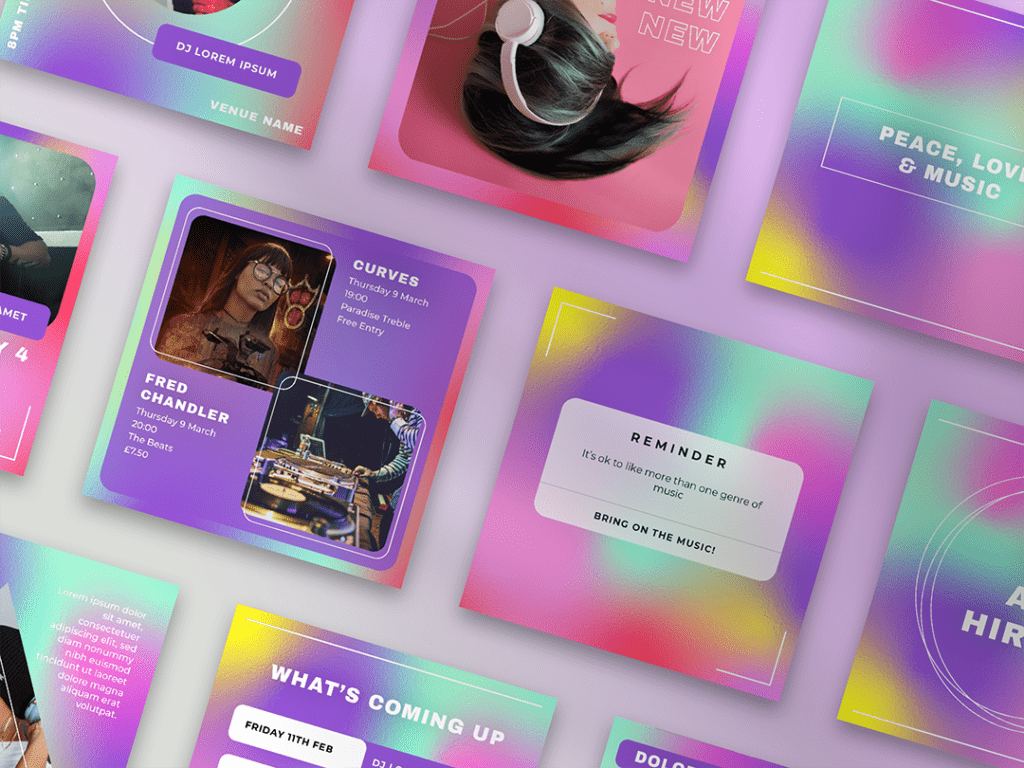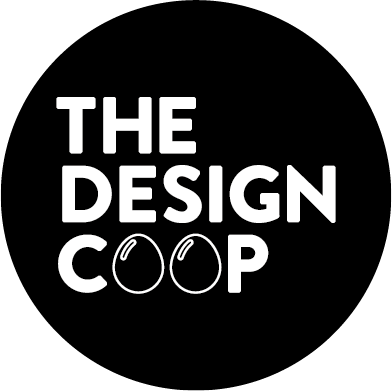If you had told me years ago that I would one day be writing a blog post for my website on why designers should learn how Canva works, I definitely would’ve laughed at you. As a designer, I’m no stranger to hating on tools that aren’t for us real designers. After years of studying design, becoming qualified and spending more years at the bottom of the ladder interning and even more years honing our skills, being faced with new tools that supposedly make designing easier for everyone can feel a little insulting. But, let’s be honest, it’s like comparing the skills of a chef to a cook-at-home meal kit or ready meal, each has its purpose.
So what is Canva and who uses it?
Canva is an online platform that enables all users – from beginner hobbyists to experienced graphic designers – to create beautiful, professional-looking images and designs. It is widely used by businesses, small and large alike, as well as individuals, for a variety of purposes: to create logos, graphics and promotional materials for websites and blogs, for custom invitation cards and posters, for educational activities such as class yearbook pages, and much more.
These days all kinds of companies are needing to utilise social media for their marketing. But content is needing to be pushed out at an ever-increasing rate. To keep ahead of the curve, businesses need to keep creating new content and often it’s not cost-effective for a business to pay for a designer or hire one full-time to create content for them. So that’s where programs like Canva come in. For a little more, Adobe even has its own offering with Adobe Express to create fast graphics with pre-made templates and graphics.
What are some of the benefits of Canva?
Well for starters, it’s FREE! There’s a Pro version available, which allows access to lots more stock photos, and fonts, as well as being able to resize your designs but you can do a lot with a free version. This also makes it extremely accessible, which means a larger audience for you to design for.
It’s Cloud Based. Who doesn’t love extra storage space on their local drive?
It can be inspiring. In some cases, it can be interesting for research purposes to see design trends. I don’t mean to follow these trends but it can be useful to see what other designs people are using, and then, ya know, make them better.
So why should a professional Designer learn to use canva?
Simply put, it’s what some of your target market uses. That’s it, that’s the main number 1 reason I’ve delved into the world of Canva. As designers, it’s important to think about how the designs we produce are used and how easy it is for the end user to interact with them. In the past, I worked on a lot of pitch proposals and would often get asked to re-create a design into Powerpoint slides so that the client can edit it themselves. This was usually if they were short on time and knew that they would need to make content edits when a designer wasn’t available. Other times it was because the number of edits they would need to make would surpass their budget and on other occasions, they just needed something they could use over and over again for lots of projects.
The beauty of tools like Canva and Adobe Express is that they are very intuitive and have a high ease of use, so much so that anyone can use them. But, they don’t replace years of practice and study in design and they’re not great tools for creating high-quality graphics from scratch as with professional-grade graphics tools like Illustrator, Photoshop, InDesign, Affinity etc. And without being able to create your own graphics, the downside of using Canva is that everything starts to look the same.
So that’s where professional designers come in. By learning to use Canva, you can learn how to design FOR Canva. You can create graphics and logos to import into it. You can create documents to hand over to your clients so they can edit it themselves, similar to the way some clients would often ask me in the past to create a Powerpoint template for them so that they could make sure their presentations looked good and they could add in their content on the fly. I would design the templates as I normally would in InDesign and then convert this to Powerpoint. Canva is no different. Learning to utilise it will help you learn how to make a finished product easier for your client to edit…or not edit if there are parts you don’t want them to mess with or move around.
Now some designers just use Canva, which has incited some hilarious memes, you might recognise the one with Captain America being held back as he claims to be a designer that designs on Canva.

But sure, a designer isn’t a designer because of the software they use. Adobe doesn’t own the monopoly on this. If this were the case, I wouldn’t have been a designer back when I used Quark (yes, I’m that old, lol). However, I’d personally question how much can be classed as ‘design’ when the designs have already been created. (Don’t come for me Freepik…ps, I love you)
For me, I will create designs in the way I usually would, which in my case is with Adobe Creative suite but for others that might be Affinity or Sketch, and then bring assets into Canva to create templates for clients to edit and use. This is useful either when commissioned for this purpose or it’s possible to put together your own templates and sell those on marketplaces in a much more accessible format to reach a wider audience. Whenever I have some downtime, I create some and upload them to my Ko-Fi shop.
The Takeaway
Tools like Canva are not professional design tools but in learning how it works, and what the limitations are, a professional designer can create designs for their clients or for wider audiences to use on the platform. Learning to create templates in a tool that your clients can use can make things simpler, more cost-effective and less intimidating for clients. Your superpower as a designer is that you’re aware of design best practices, so being able to apply that skill to a tool that your clients can use has value in itself. Check out some of the designs I created using Illustrator and converted to Canva in my shop.








